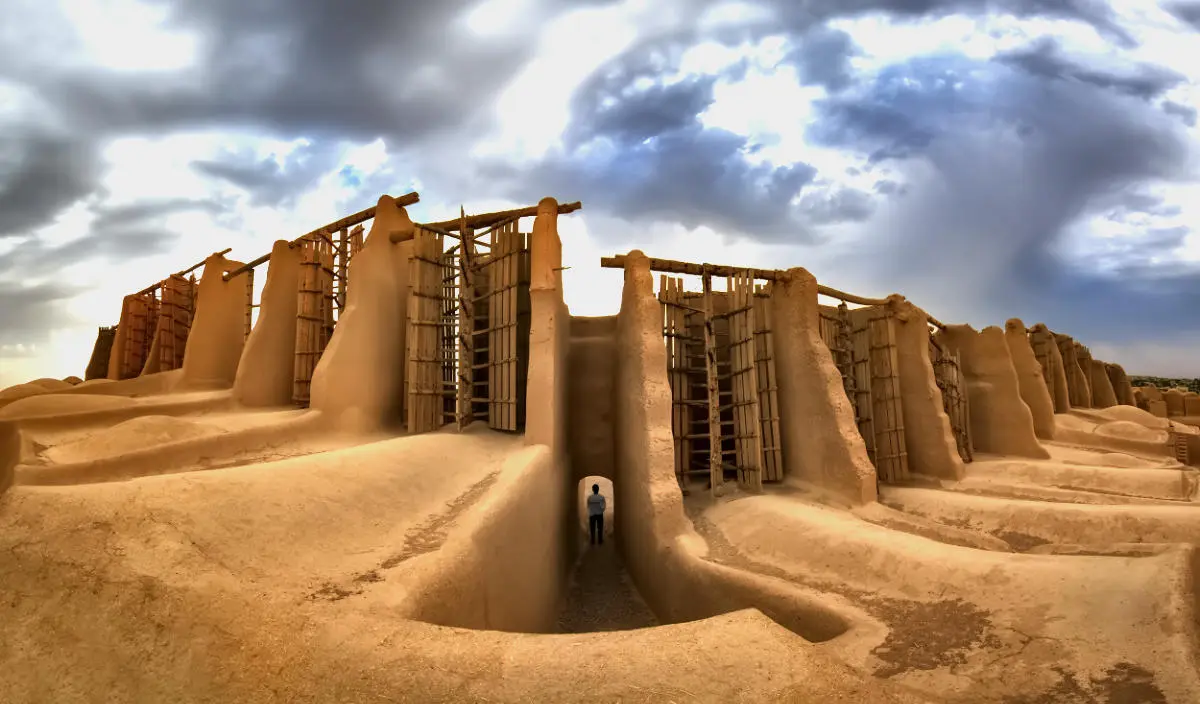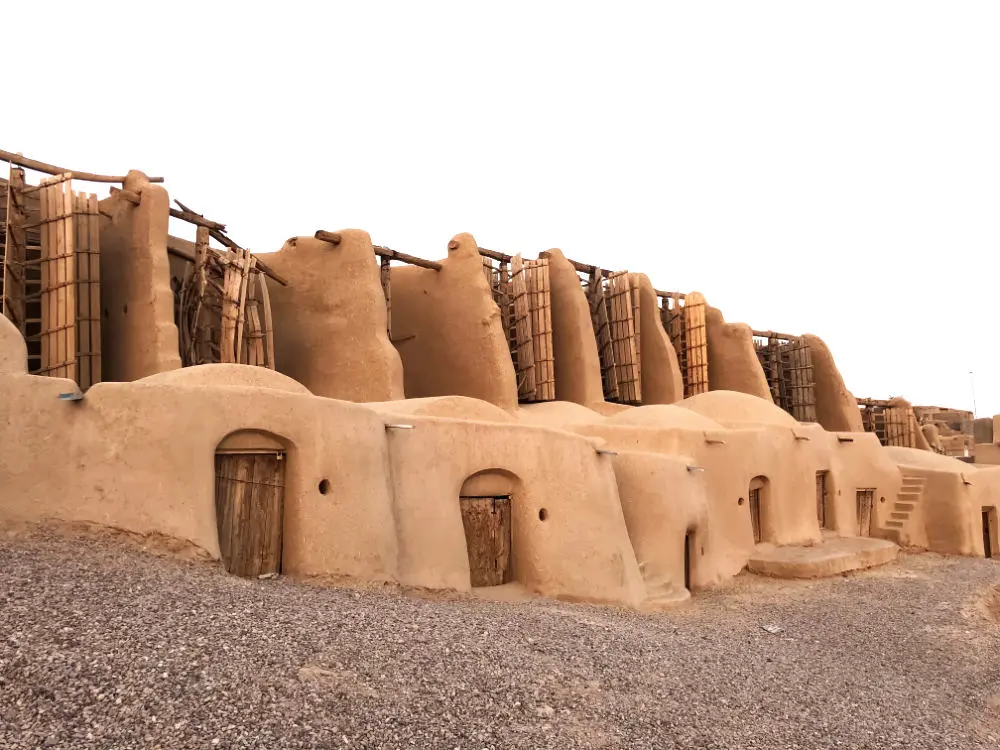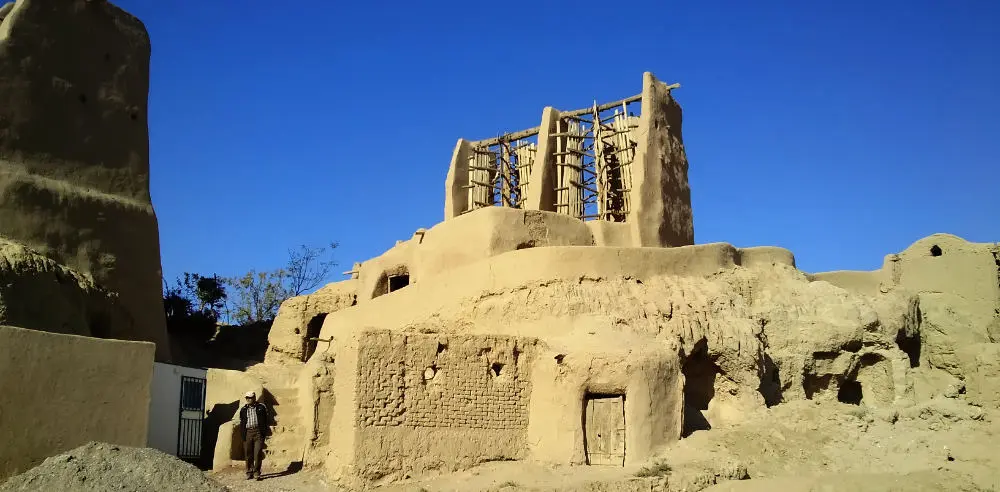The World's Oldest Windmill
Discover the fascinating history of the world's oldest windmill and learn about its significance in shaping the landscape of renewable energy.

Have you ever wondered what the oldest windmill in the world is? The answer may surprise you.
The Nashtifan Windmills in Iran hold the title of being the oldest windmills still in operation, dating back to the 7th century AD. These ancient structures not only represent a remarkable engineering feat but also hold cultural and historical significance that continues to intrigue researchers and visitors alike.
The Nashtifan Windmills - Oldest in the World
Nestled in the windswept landscape of Nashtifan, Iran, stand the majestic Nashtifan Windmills, recognized globally for their antiquity, with origins tracing back to the 7th century AD.
Constructed during the era of the Sassanian Empire, these remarkable structures are a testament to ancient engineering ingenuity. Comprising wooden blades mounted on vertical axes, the design of these windmills showcases a profound understanding of aerodynamics and mechanical engineering long before modern science.
What makes these windmills particularly fascinating is their enduring functionality; they have continuously served the local community by grinding grain, a critical task that underscores the importance of sustainable practices in ancient times. The resilience and longevity of the Nashtifan Windmills highlight the durability of their construction and the effectiveness of their design in a region characterized by its arid climate. This resilience is further bolstered by the commitment of the local community, who have played a pivotal role in the preservation of these historical marvels.
Unlike many ancient structures that serve only as relics of the past, the Nashtifan Windmills remain a vibrant part of the community's daily life, bridging the gap between the ancient and the modern in the most literal sense.
The Discovery of the World's Oldest Windmill
The unveiling of the Nashtifan Windmills as the world's oldest windmills marked a significant moment in the study of ancient technologies.
Hidden in the stark, arid landscape of Iran, these windmills were not widely known to the global community until relatively recently. Their existence came to light through a combination of scholarly research, local lore, and the ever-increasing interest in renewable energy sources from past civilizations.
This discovery has prompted a reevaluation of the technological capabilities and environmental knowledge of those who lived over a millennium ago. The process of uncovering the history and mechanics behind these ancient structures involved meticulous examination of historical records, architectural studies, and the local oral traditions that had preserved the windmills' stories. Scholars and historians pieced together the significance of these windmills, recognizing their design and functionality as far ahead of their time.
This revelation not only provided insight into the innovative spirit of ancient societies but also underscored the importance of sustainable resource use, a principle that remains critically relevant today. The uncovering of the Nashtifan Windmills has thus bridged historical curiosity with contemporary concerns, revealing the age-old human endeavor to harmonize with the natural world.
Engineering Marvels of the Ancient World
The engineering feats behind the construction of the Nashtifan Windmills underscore a profound legacy of innovation that dates back over a millennium. These structures, with their vertical-axis design, stand as a vivid testament to the ingenuity of our forebears. Unlike the more familiar horizontal-axis windmills that dot landscapes across various parts of the world, the Nashtifan Windmills utilized a different approach to capturing wind power. This unique configuration allowed them to efficiently harness the steady, strong winds of the region, making them an invaluable resource for the local community.

The simplicity of their construction belies the sophistication of the underlying engineering concepts, which were far ahead of their time. The materials chosen and the methods employed in building these windmills ensured their durability and efficiency across centuries. The vertical-axis design, in particular, showcases an early understanding of how to adapt technology to suit specific environmental conditions—a principle that remains at the heart of modern engineering.
Furthermore, these ancient windmills exemplify the sustainable use of natural resources, reflecting an ethos of harmony with nature that is increasingly relevant in today’s world. The enduring functionality and resilience of the Nashtifan Windmills are a tribute to the unseen hands that crafted them and a reminder of the timeless nature of true engineering marvels.
The Cultural and Historical Significance of Nashtifan
The windmills of Nashtifan are more than just ancient architectural feats; they are deeply woven into the cultural and historical fabric of Iran. Beyond their function, these windmills stand as lasting symbols of the ingenuity and endurance of past generations. Their presence in Nashtifan tells a story of human innovation and adaptation to environmental challenges through sustainable means. For the local community, these windmills are a source of immense pride, embodying centuries of tradition and the ancestral wisdom that engineered these structures to stand the test of time.
Their significance extends beyond local boundaries, attracting scholars, historians, and tourists from across the globe, eager to connect with the past in a tangible way. The windmills serve as a cultural bridge, offering insights into the life and technologies of the Sassanian Empire and how these early innovations have influenced the course of human history. This intersection of culture, history, and technology underlines the importance of preserving such sites, not merely as tourist attractions but as living museums that continue to educate and inspire.
The maintenance and celebration of the Nashtifan Windmills underscore the value of heritage in understanding our collective past and the contributions of ancient civilizations to contemporary society. As stewards of such treasures, the local and global communities are reminded of the responsibility to honor and preserve these links to our shared human story.
Preserving the Legacy of the World's Oldest Windmill
As the world shifts its focus toward sustainable living and the conservation of historical sites, the preservation of the Nashtifan Windmills has become increasingly important.
These ancient windmills serve as a connection to our past and a beacon of sustainable practices for the future. Efforts to maintain these structures involve a collaborative approach, bringing together local authorities, international conservationists, and historians.

Techniques employed in these preservation efforts are carefully chosen to respect the original materials and construction methods, ensuring that any intervention remains true to the windmills' historical and cultural integrity. Protective measures against natural wear and the impacts of climate change are being implemented, aiming to shield the windmills from erosion and other environmental threats.
Moreover, educational programs and community engagement initiatives are crucial in raising awareness about the importance of these windmills, fostering a sense of stewardship within the local community and among visitors. Through these concerted efforts, the legacy of the Nashtifan Windmills is being actively preserved, ensuring that this ancient marvel continues to inspire and educate for many more generations.
The Enduring Influence of Ancient Windmills on Modern Technology
The architectural ingenuity of the Nashtifan Windmills not only showcases the brilliance of ancient engineering but also serves as a foundation for contemporary advancements in wind energy technology.
The principles observed in these millennia-old structures have inspired a new generation of engineers and scientists focused on renewable energy solutions. While modern wind turbines have evolved significantly from their ancient predecessors in terms of design and materials, the core concept of converting wind power into usable energy remains unchanged.
This lineage of innovation, stemming from the vertical-axis windmills of Nashtifan to the sleek, efficient turbines dotting landscapes today, highlights a continuous pursuit of sustainable energy sources. The adaptation of wind power, seen through the lens of history, offers valuable lessons on leveraging natural resources with minimal environmental impact.
As the world increasingly turns to renewable energy to meet its needs, the legacy of the world's oldest windmills reinforces the importance of wind as a clean, sustainable source of power. The enduring relevance of windmill technology, refined over centuries, exemplifies how ancient wisdom can guide modern advancements, ensuring that the wind remains a vital ally in the quest for a sustainable future.
Summary
The Nashtifan Windmills, nestled in Iran, stand as a testament to the innovation and sustainability practices of ancient times, marking their place in history as the world's oldest functioning windmills since the 7th century AD.
These engineering feats not only highlight the advanced understanding of wind power utilization by early civilizations but also their commitment to eco-friendly solutions long before the modern emphasis on renewable energy. Through their continued operation, they provide a unique insight into the sustainable practices of the past, while serving as a bridge between ancient and contemporary engineering marvels.
Their significance extends beyond technological achievements, embodying a rich cultural and historical heritage that captivates scholars, locals, and tourists alike. The preservation efforts undertaken to maintain these windmills underscore the importance of safeguarding our global heritage, ensuring that these ancient marvels continue to inspire future generations with lessons of ingenuity, sustainability, and the enduring power of human creativity.
As we face contemporary challenges in energy and conservation, the Nashtifan Windmills remind us of the long-standing relationship between humans and renewable resources, offering guidance and inspiration for a sustainable future.
Also read:

